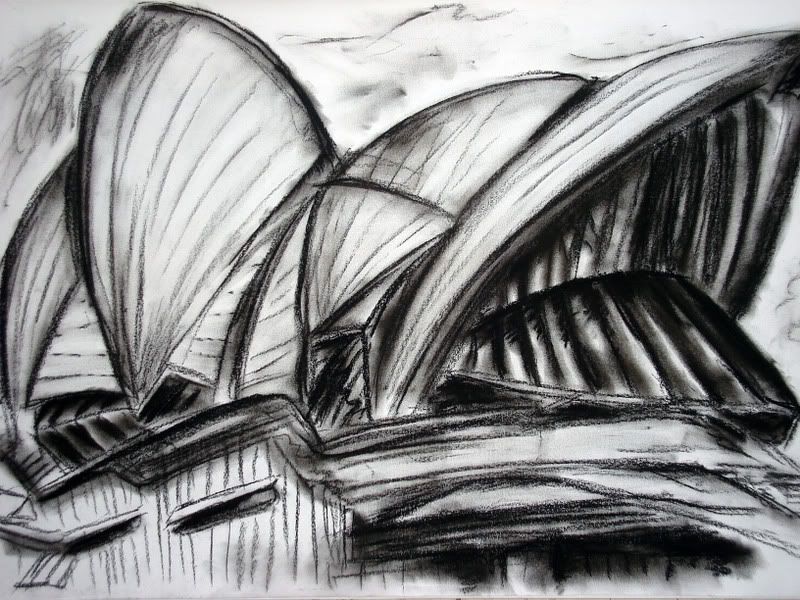This first drawing is an attempt to represent the 'space' not the 'structure' of the Sydney Opera House. The focus was on the light and shadow created by the form while facing the changes of daylight.
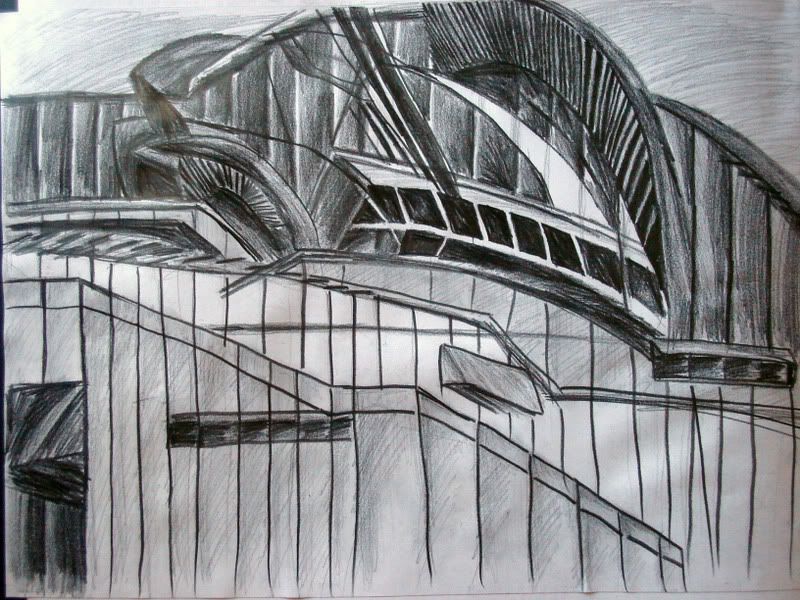
The notion of change and movement is further explored as through the challenge of constant change of drawing locations with different perspectives of the subject. The drawing attempts to merge three drawings into one through the use of: overlapping, transparency and interpenetration of forms.
COLLABORATION DRAWING I
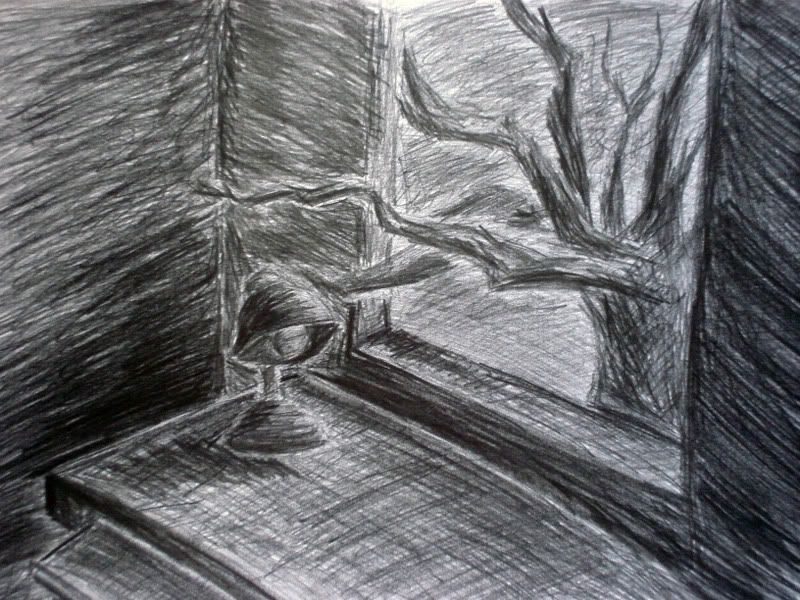
The drawing above is the product from a sole description of an unknown, unseen space provided by one person and depicted by another (me). The description follows.
Group Member Description of a Space:
The two sides of the walls are very dark since the sunlight can just reach into the room through one window. The sun is setting and it is turning into night. A tree stands in front of the window, thus blocks much of the view. A computer desk is below the window and there also a small lamp upon desk.
STILL LIFE DRAWING
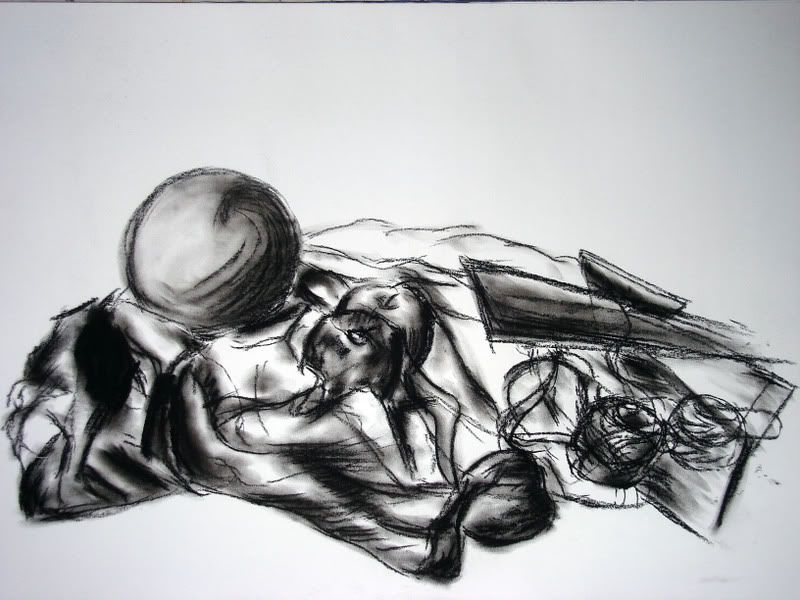
This still life here is no ordinary still life but a moving one. This may challenge the concept of what a still life may be but the explanation here is simple: we have an arrangement of objects which we draw, after a certain amount of time the objects are moved and we must cope with these parameters to produce a drawing. Hence a 'moving still life'. The challenge here are what choices shall be made to record these changes for the drawing to work as a whole.
LANDSCAPE DRAWING

This drawing which you may or may not recognise is of the Village Green of UNSW looking from Level six of the Red Centre. The task was to look outside the window and simply draw the landscape that appears in front of you. The complication: choose an element within the landscape you have drawn and enlarge it on the page, whether it be by repetition by overlapping, transparency or interpenetration. In the above drawing I chose to enlarge the light post on the left simply because it was an insignificant element in stature in and amongst the drawing which I believed if enlarged would not cause too much disruption to the overall landscape. My choice of enlargement: overlapping.
COLLABORATION II
Part A
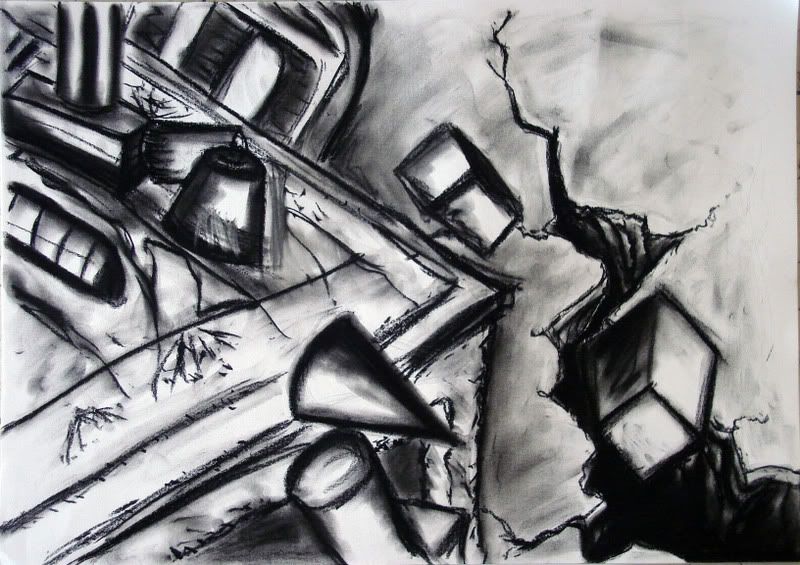 In our collaborative groups a first member was to produce an A4 drawing and give it to a second member who was to extend that drawing. The second was then to take an A4 section of the now new drawing and pass it to the third member, repeating the process until all four members had, had there turn in extension. The above drawing contains a section of the original extended drawing (top left corner) and a new interpretation of what the larger situation maybe, in this case a ground splitting earthquake.
In our collaborative groups a first member was to produce an A4 drawing and give it to a second member who was to extend that drawing. The second was then to take an A4 section of the now new drawing and pass it to the third member, repeating the process until all four members had, had there turn in extension. The above drawing contains a section of the original extended drawing (top left corner) and a new interpretation of what the larger situation maybe, in this case a ground splitting earthquake.Part B
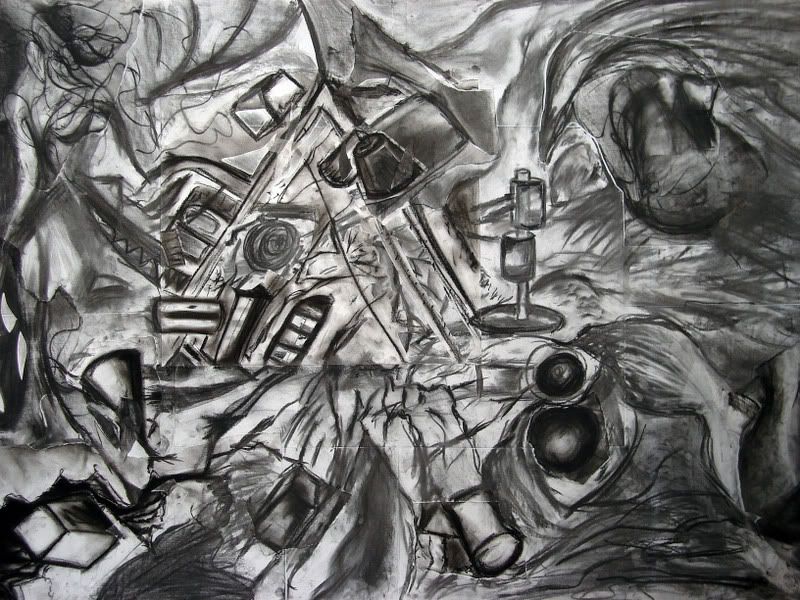 The four drawings produced by each member was to assemble to create on new larger drawing.
The four drawings produced by each member was to assemble to create on new larger drawing.There were difficulties in doing so as each member seemed to have interpreted not only what was happening in the larger drawing differently but there was also some confusion of scale. The union of the four drawings was eventually based on the landscape of the common objects apparent in each individual depiction and the complete elimination of any distinction of four drawings. The final drawing much resembles an earthquake of some kind creating a focal point of suction in the center of the picture, drawing not only distinguishable objects but also the viewer's line of sight intensely to the middle.
COLLABORATION III
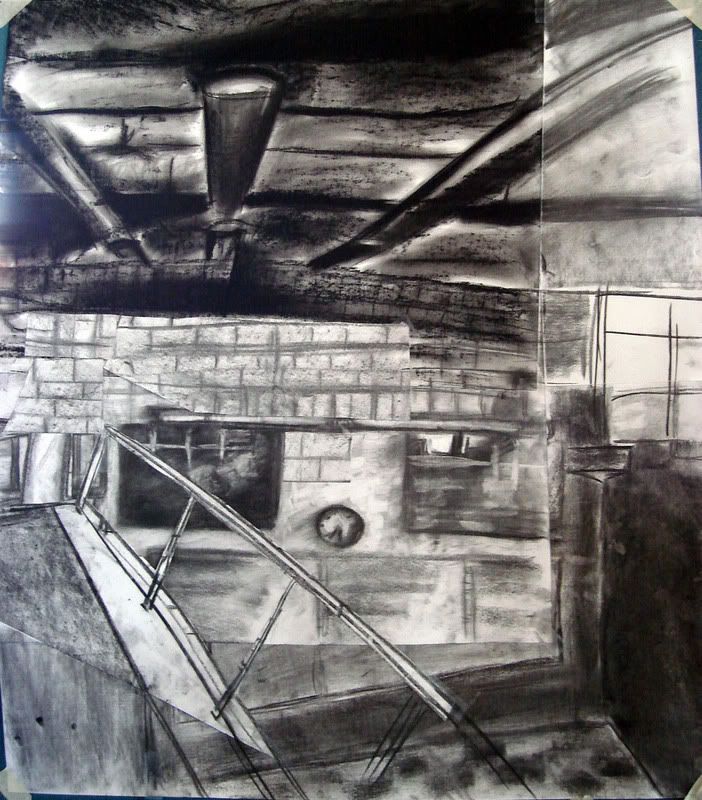
In this final collaborative task we were to make a drawing of a 'hypothetical wall'. The task was rather free to interpretation. In this drawing my group members drew the same wall but in sections: top, middle and bottom and subsequently from different angles and in the end tried to piece it together. Again difficulties emerged from the varying angles which were ultimately resolved through the cutting up of one drawing, retaining the necessary and discarding unnecessary elements overall strengthened the cohesion of the finished drawing as a whole.
